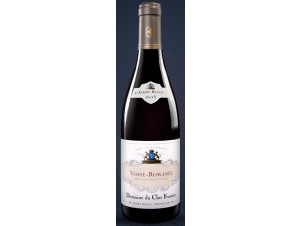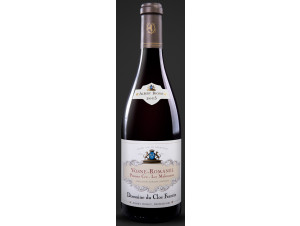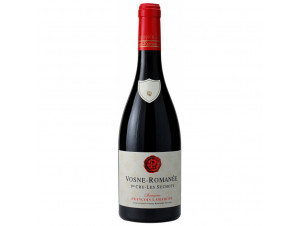You have no items in your shopping cart.
Wine Vosne-Romanée
The Vosne-Romanée appellation is "the pearl of the coast" according to Gaston Roupnel. Located equidistant from Dijon and Beaune, this jewel of the Côte de Nuits produces exclusively red wines from the Pinot Noir grape variety. These great wines that leave every wine lover dreaming are produced in the communes of Vosne-Romanée and Flagey-Echézeaux. Read more on Vosne-Romanée
-
Top Selling
-
Top Selling-17%
-
Top Selling-17%
Appellation Vosne-Romanée
Vosne-Romanée a history of great wines since the Middle Ages
The first traces of vines on this appellation date back to the Middle Ages. The village of Vosne was managed by the Clunisian abbey of Saint Vivant, founded in 890, and from this abbey we still have the winery and the toponymy of a climat "la Romanée Saint-Vivant". As for the commune of Flagey-Echézeaux, it is under the control of the Abbey of Cîteaux.
In the 18th century, Louis Ferdinand Bourbon-Conti bought a parcel of Romanée which gave birth to the most coveted grand cru of the Côte de Nuits: "la Romanée-Conti". The Prince of Conti is at the origin of the fame of Vosne-Romanée wines. In 1789, the time is the revolution and the vines belonging until now to the Abbeys and the nobility (as is the case with the Prince Conti) will be confiscated and sold at auction. Despite this event the wines of Vosne-Romanée will not lose any of their reputation.
In 1866, an imperial decree allowed the commune of Vosne to add the name of the greatest growth of the finage. Vosne became Vosne-Romanée. The end of the 19th century was marked by two major scourges, mildew and phylloxera. There followed a reconstruction of the vineyard, the reputation and the quality of the wines of Vosne-Romanée and those in particular by the constitution of a cooperative cellar in 1909 which does not exist any more today.
Vosne-Romanée has many 1er cru climats
.The Vosne-Romanée appellation located on the Côte de Nuits equidistant from Beaune and Dijon, is a collection of great wines. Indeed, it has 14 climats recognised as premier cru including the famous Cros Parentoux (to name but one) and 8 grands crus which are Echézeaux, Grand-Echézeaux, La Grand Rue, Richebourg, La Romanée, La Romanée Saint Vivant, La Tâche and of course La Romanée-Conti.
This appellation remains relatively small with an area of 228 ha but of which 72 ha are recognised and classified as Grand Cru. In this appellation the Pinot Noir is king. The parcels benefiting from the Vosne-Romanée and Vosne-Romanée premier cru appellations are located on the entire slope, which has a 150m difference in height, and on the piedmont that extends to the D974. The parcels are located on the front of the hillside and are exposed to the east.
What to expect when tasting a Vosne-Romanée?
Vosne-Romanée is a very diverse appellation, with each product relating its climate of origin. The uniqueness and rarity of these wines make them mysterious. It will be necessary to be patient to taste them, they are wines for laying down which need to blossom in order to be able to deliver themselves entirely to the taster.
The red wines of Vosne-Romanée are characterised by a deep ruby red colour. The nose presents aromas of ripe fruit such as blackcurrant, strawberry, raspberry. These fruity notes are complemented by more spicy notes with a slight floral side. Time will let the tertiary aromas develop on notes of leather, undergrowth, sometimes animal mushroom. In the mouth you will find a velvet sensation characteristic of great wines.
What to pair with a Vosne-Romanée?
The red wines of Vosne-Romanée have a structured, spicy side that will go well with meats of character such as lamb or game, cheeses of the region such as Epoisses and Langres and with oeufs meurettes, a must-try Burgundian speciality.
The great vintages of Vosne-Romanée
The weather is the element that dictates the success of a vintage. Whatever the weather, the winemaker will be keen to produce a great wine with the exceptional terroir that nature and the centuries of soil and subsoil construction have given him. Nevertheless, some millesimes will be conducive to the production of a great wine.
For the red wines of Vosne-Romanée, the exceptional vintages remain numerous but include 1928, 1929, 1937, 1945, 1947, 1949, 1959, 1969, 1971, 1978, 2001, 2005 and 2009.
The must-see domains of Vosne-Romanée
Domaine de la Romanée-Conti:
It is impossible to talk about Vosne-Romanée without talking about the Domaine de la Romanée-Conti and Henri Jayer. These two estates, which contributed greatly to the reputation of Burgundy wines, nevertheless had a fundamental difference in terms of vinification. For Henri Jayer, it is inconceivable to put the cob during vinification, since it is inedible. On the other hand, for the director of Romanée-Conti, Aubert De Villaine, vinifying in whole bunches i.e. with the cob allows to highlight the characteristics of the wine. It's a bit like spices in cooking. Despite these fundamental differences, they are both must-have Vosne-Romanée estates.The Méo-Camuzet Estate:
Jean-Nicolas, the current owner of the estate, located in Vosne-Romanée, applies organic viticulture but without certification. The wines are made in such a way as to respect the terroir and the vintage while giving them concentration, structure and finesse. He vinifies 5 climats of Vosne-Romanée including the famous "Cros-Parentoux". He shares this first growth with Emmanuel Rouget, Henri Jayer's nephew.The Domaine Michel Gros :
The Gros family has been established in Vosne-Romanée since 1830. Michel Gros is part of the sixth generation of this family. He continues and develops the work of the previous generations and those on the 14 wines that they produce, including three Vosne-Romanée.
Bourgogne appellations
































 TWIL - Achat de Vin
TWIL - Achat de Vin


